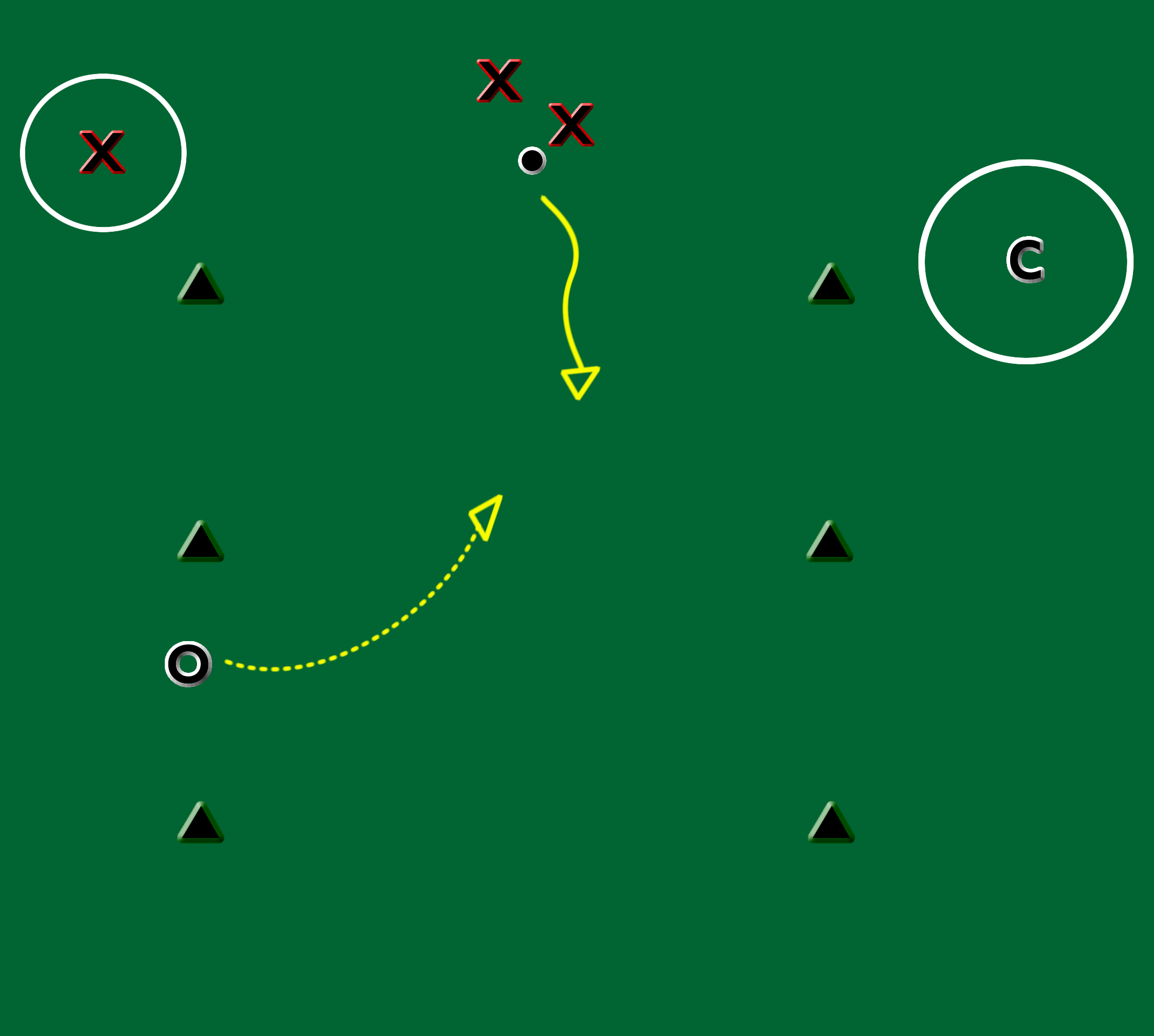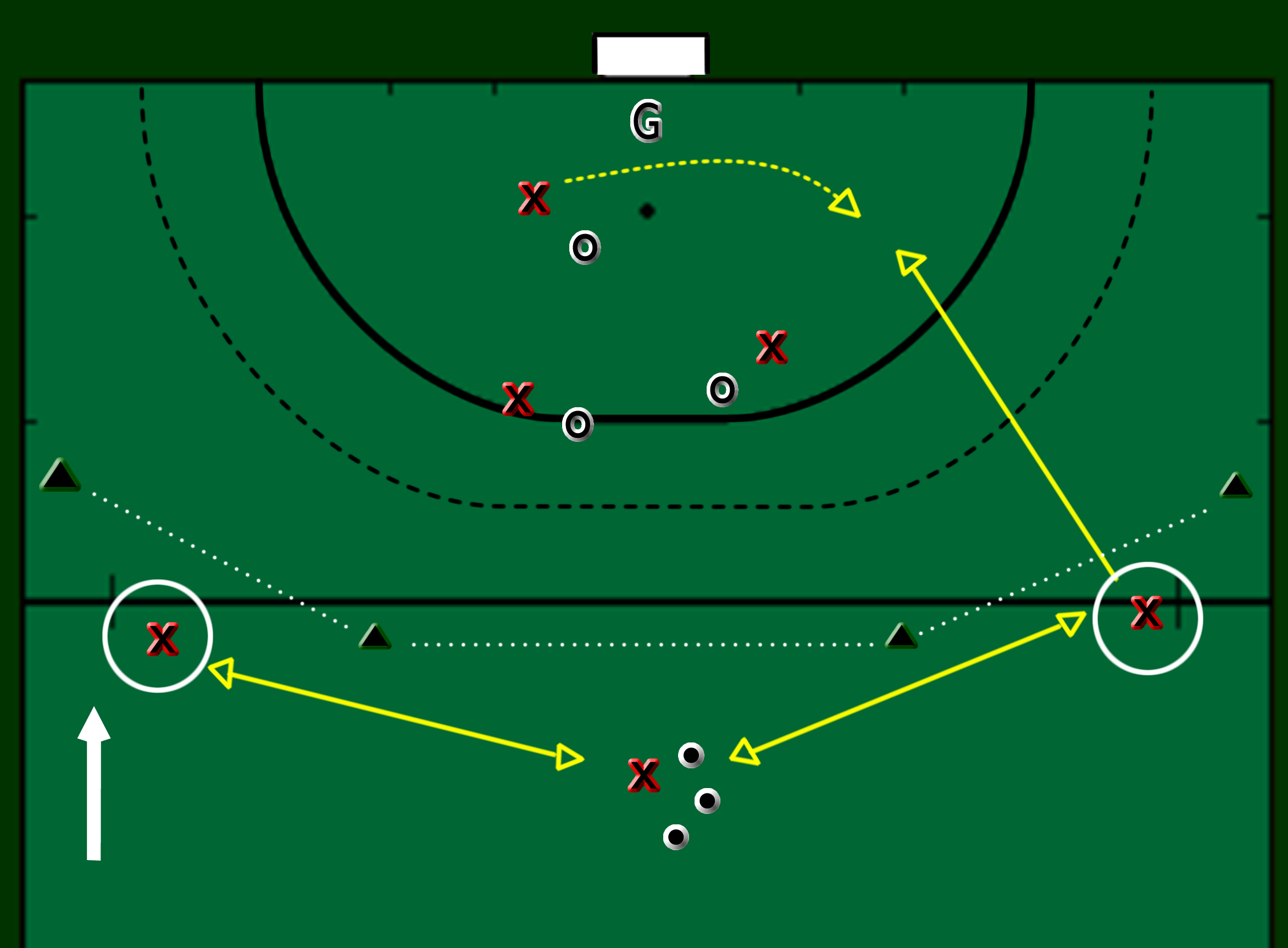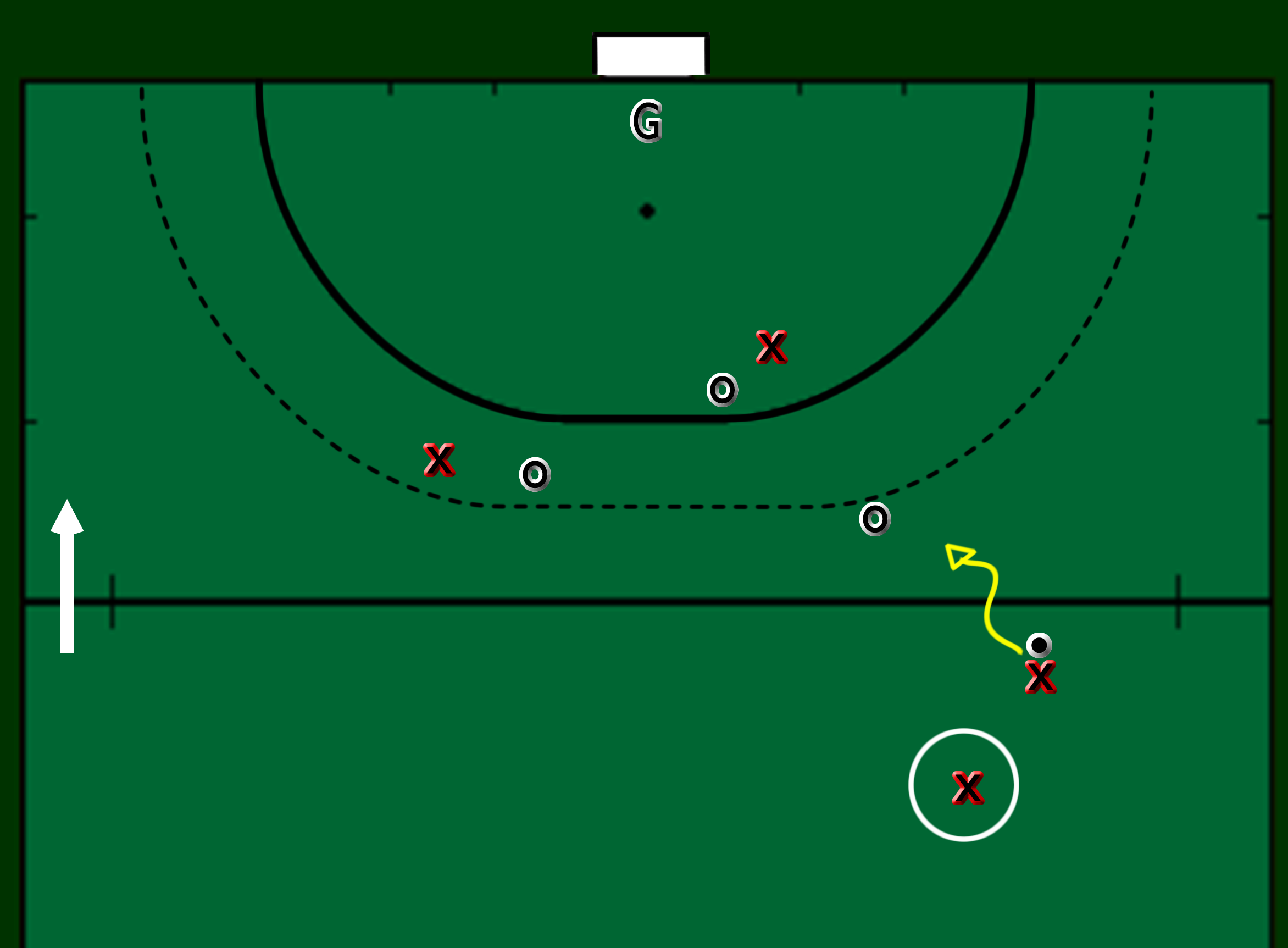AREAS OF THE GAME - TRANSITION INTRODUCTION
Transition: Contested/Changing Possession
Transition plays a significant role in the game of field hockey. This is especially true at lower levels, but even at the international level transition play is important. How a team prepares for a change of possession, and reacts to a change of possession, can affect the flow of play and the outcome of the game.
It is an area of the game that is often overlooked, as more importance is placed on Attacking play and Defensive play. As coaches, we can stress the URGENCY of quick transition to defence, and the OPPORTUNITY of quick transition to attack. We can also train players, using appropriate drills and positioning, to prepare and react well to transition play, understand risk and take calculated risks at the right time.
2-Way Drills
When designing a drill for your team/players, it is valuable to try to simulate some of the pressure and surrounding activity of a game situation. This is not always possible, but an easy way to train transition play is to make sure that every drill has a counter component to it. For example, in a 1 vs 1 grid, if the defender makes a tackle, he should have an outlet player to complete a pass to once he has gained possession. This could be an extra player waiting in line, or it could be the coach standing to the side (player or coach circled on side of grid).
In this 3 vs 3 Circle Defence Drill, once the a defender wins the ball, he tries to pass to either of the circled X’s on the perimeter, simulating a quick outlet to safety in a game.
Counter-Attack
The moments immediately after your team wins possession of the ball from the opponent present a key opportunity. At this time, the opponent’s defence is usually disorganized, and often they have poor defensive structure. So it is an opportunity to eliminate players and create an advantage going into attack. The two main points here are:
1. Anticipate the change in possession. Off-ball players should try to anticipate whether a teammate is going to win a loose ball, and can begin to “cheat” forward to get into good counter-attack position (behind an opponent’s line).
2. React quickly. Off-ball players must be aware of the possession situation, and react immediately to move into an attacking position.
Counter-Defence
This can be defined as “maintaining good defensive structure as you attack.” Each team approaches this differently. Some coaches throw caution to the wind and send 8 players spread out wide into full attack. Others are more conservative, keeping players narrower and making sure there are at least 4 players behind the ball as well as the goalkeeper. This is your decision as a coach, but it is important to
As with the Counter-Attack, anticipating and reacting to the play is critical. If it looks like your teammate is going to lose possession, the off-ball player should begin to drop back to prepare for defensive positioning, and then react accordingly.
The Guard Position - Role in Transition
Definition of the Guard: a support player for the ball carrier, positioned behind the ball carrier, usually on the inside of the field.
Position: The distance and angle of the Guard will depend on the position on the field, and positioning of the defending players - but a general guideline in the open field is 5 meters off the inside shoulder of the ball carrier (see diagram - circled X is in Guard position). 
Effect in Transition: Using the Guard position in attack has many benefits in the area of attacking play (communicator to ball carrier; high percentage release/possession pass; attacking pivot passing position to change the angle of attack). But a critical value of the Guard is to protect the team in case the ball carrier loses possession. The most vulnerable line immediately after a turnover is the direct line to your goal, and the Guard is in this line either to make a tackle and Regain possession, or at least delay the counter-attack.
Free Hits/Sideline Hits
The ability to take a quick free hit/restart has always been an effective attacking tool. But with the advent of the self-start rule, a quick restart can be devastating.
Understanding when to restart quickly (accelerate the game) and when to pause (decelerate) is important from an attacking standpoint. If the defence is disorganized and the attacking team has built momentum going into the attacking end, it is usually effective to restart immediately to maintain attacking flow. If the game is not controlled for your team and you have had trouble maintaining possession, this may be a good time to slow the tempo of the game, and make sure you make a possession pass/play instead of restarting quickly. Conversely, after conceding a free hit, a defender must understand how to drop back and recover quickly to the most effective defensive position.
Aerials/Overheads
The ability to throw and receive overheads varies at different stages of development. At the elite level, most players can receive and control an overhead with relative ease. But even at this level mistakes are made that lead to transition, and at all levels below, an overhead can frequently lead to turnovers, even when the receiving player is in good position. Again, risk is an important consideration that can influence positioning and skills.
In attack, it can be effective to position a player behind the opponent who is receiving the aerial, taking the chance that he will mis-play or miss the ball. This means that if the receiver takes the ball cleanly, he has eliminated the player in behind.
When a player is receiving an aerial in a defensive position, he should consider where he is on the field and which players are behind him. This can determine how he chooses to receive the ball. If there is an attacker in behind, the defender can consider stopping the ball with his body behind his stick, to make sure if the stick misses, the ball does not run through for the attacker.
There are other variables that affect playing and controlling an aerial, but players should practice receiving aerials under pressure (and on the other side pressuring the receiver), to improve understanding of risk, decision-making, and skill execution.

